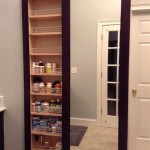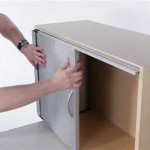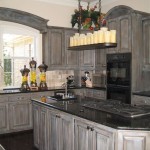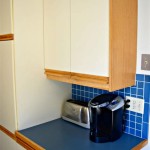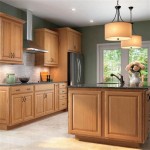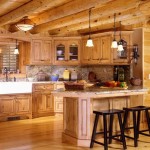Average Cost of Kitchen Cabinet Painting: A Comprehensive Guide
Kitchen cabinet painting is a popular and cost-effective way to revitalize a kitchen without the expense and disruption of a full remodel. Rather than replacing cabinets entirely, homeowners can opt to have them professionally painted, significantly altering the aesthetic of the space while retaining the existing cabinet structure. Understanding the factors that influence the average cost of kitchen cabinet painting is crucial for budgeting and making informed decisions.
The total cost of painting kitchen cabinets is not a simple, fixed number. It is a variable figure dependent on a multitude of factors ranging from the size and layout of the kitchen to the complexity of the painting process itself. Homeowners must consider these factors to get an accurate cost estimation and avoid unexpected expenses.
This article will provide a comprehensive overview of the average cost of painting kitchen cabinets, outlining the key elements that contribute to the overall price and offering insights into potential cost-saving measures.
1. Factors Influencing the Cost of Kitchen Cabinet Painting
Several key factors come into play when determining the cost of kitchen cabinet painting. These factors relate to the size of the kitchen, the condition of the existing cabinets, the type of paint and materials used, and the complexity of the painting process.
Size and Number of Cabinets: The most significant factor is the sheer number of cabinets and drawers that need to be painted. A larger kitchen with more cabinets will naturally cost more than a smaller kitchen. Contractors often provide estimates based on the number of cabinet doors and drawers, sometimes including the cabinet frames as a separate calculation.
Cabinet Material: The material of the existing cabinets significantly impacts the preparation process and, therefore, the cost. Solid wood cabinets, while often desirable, may require extensive sanding and priming to ensure proper paint adhesion. Laminate or veneer cabinets, on the other hand, may need special primers designed for non-porous surfaces. Each material demands a specific preparation approach, influencing the labor and material costs.
Cabinet Condition: The existing condition of the cabinets plays a vital role in the overall cost. Cabinets with significant damage, such as deep scratches, dents, or water damage, will require more extensive repairs before painting can begin. This additional prep work, including wood filling, sanding, and potentially reinforcing damaged areas, directly increases the labor hours and material costs.
Paint Type and Quality: The type and quality of paint chosen also substantially impact the cost. High-quality paints, specifically formulated for cabinets, offer superior durability, resistance to chipping and scratching, and a smoother, more professional finish. While these paints are more expensive upfront, they often provide better long-term value due to their longevity and superior appearance. Budget-grade paints may require more coats and may not hold up as well, potentially leading to earlier repainting needs.
Paint Finish: Different paint finishes, such as matte, satin, semi-gloss, and gloss, have varying prices and require different application techniques. Semi-gloss and gloss finishes, known for their durability and ease of cleaning, are often preferred for kitchen cabinets but may also require more meticulous preparation to achieve a flawless finish. Matte finishes, while offering a modern look, may be less durable and harder to clean, requiring careful consideration.
Hardware Removal and Installation: Whether the homeowner or the painting contractor handles the removal and re-installation of cabinet hardware (knobs, pulls, handles, hinges) can also impact the cost. If the contractor is responsible for this task, it will be factored into the labor costs. Homeowners may choose to handle this themselves to save money, but it requires time and effort.
Additional Services: Some painting companies offer additional services, such as cabinet refacing or modifications, which can significantly increase the overall cost. Refacing involves replacing the cabinet doors and drawer fronts while keeping the existing cabinet boxes. Modifications might include adding new cabinets or islands, altering the layout, or installing new storage solutions.
Geographic Location: Labor costs and material prices can vary significantly depending on the geographic location. Areas with a higher cost of living typically have higher labor rates for painting services. Additionally, the availability and cost of specific paint brands and materials can fluctuate based on location.
2. Estimating the Average Cost: A Breakdown
While the specific cost of painting kitchen cabinets varies significantly, it's possible to provide a general estimate based on common project parameters. This estimate incorporates both labor and material costs. These costs can further be broken down by the different stages of painting.
Professional Painting: On average, homeowners can expect to pay between $3 to $10 per square foot for professional kitchen cabinet painting. This price range covers the entire process, including preparation, priming, painting (typically two coats), and potentially re-installation of hardware. This price can be less if the homeowner prepares and primes the cabinets themselves.
Labor Costs: Labor costs typically account for a significant portion of the overall expense. Labor rates can vary based on the painter's experience, the complexity of the job, and the geographic location. Expect to pay anywhere from $50 to $100 per hour for a professional painter or painting crew. Some painters may charge a flat rate per cabinet door or drawer, which can be a more predictable pricing structure.
Material Costs: Material costs include the price of paint, primer, sandpaper, brushes, rollers, tape, drop cloths, and any necessary repair materials. High-quality paints and primers can significantly increase material costs, but they often result in a more durable and visually appealing finish. A good primer is essential to ensuring proper paint adhesion.
DIY Option: Painting kitchen cabinets as a do-it-yourself (DIY) project can save on labor costs, but it requires time, effort, and skill. The cost of materials for a DIY project can range from $200 to $600, depending on the size of the kitchen and the quality of the materials chosen. However, DIY projects can result in lower-quality finishes if the proper preparation and painting techniques are not followed.
Average Project Cost: A typical kitchen with approximately 30 cabinet doors and drawers could cost between $900 and $3,000 to professionally paint. This range highlights the considerable variation in costs based on the factors described earlier. Getting multiple quotes from different painting contractors is crucial to ensure a fair price.
Factors causing higher costs: Intricate carved details, unusual cabinet styles, or heavily damaged cabinets can all drive the price to the higher end of the spectrum. These situations require more time and expertise to properly prepare and paint.
3. Cost-Saving Strategies for Kitchen Cabinet Painting
While painting kitchen cabinets can be a significant investment, homeowners can implement several cost-saving strategies to reduce the overall expense without compromising the quality of the finish.
DIY Preparation: Completing some of the preparation work yourself, such as removing cabinet doors and drawers, cleaning the surfaces, and lightly sanding the cabinets, can significantly reduce the labor costs charged by professional painters. However, it is essential to perform these tasks correctly to ensure a smooth and even paint application. If you are unsure about doing this correctly, leaving it to the professionals is the better option.
Hardware Management: Removing and reinstalling cabinet hardware yourself can save on labor costs. This task is relatively straightforward and can be easily accomplished with basic tools. Consider replacing the hardware entirely to update the look of the cabinets while they are being painted. New hardware can dramatically transform the appearance without costing a fortune.
Choose Affordable Paint: While high-quality paints offer superior durability, there are mid-range options that provide a good balance between cost and performance. Research different paint brands and consider using a less expensive paint for the base coats and a higher-quality paint for the topcoat. Consulting with a paint specialist at a local hardware store can provide valuable insights into affordable and durable paint options.
Get Multiple Quotes: Obtaining quotes from at least three different painting contractors is crucial for comparing prices and services. Be sure to provide each contractor with the same information regarding the scope of the project, including the number of cabinets, the cabinet material, and any specific requests. Compare the quotes carefully, paying attention to the details of what is included, such as the number of coats of paint, the type of primer, and any additional services. A detailed estimate will prevent unexpected charges later.
Off-Season Painting: Consider scheduling the cabinet painting project during the off-season, such as winter or early spring, when painting contractors may be less busy and more willing to offer discounts. The weather in some regions may also affect the availability of painting contractors; indoor projects may be more consistently scheduled during inclement seasons.
Minimize Design Changes: Avoid making significant changes to the cabinet design or layout during the painting project. Adding new cabinets or modifying existing ones will significantly increase the cost and may be better addressed in a separate, future remodel.
Negotiate with the Contractor: Don't be afraid to negotiate with the painting contractor. Discuss the possibility of reducing the price by eliminating certain services or by providing some of the materials yourself. Offering to pay in cash or upfront may also incentivize the contractor to offer a discount.
Proper Surface Prep: Regardless of hiring a professional or tackling the job as a DIY task, ensure proper surface preparation. Thoroughly cleaning, sanding, and priming the cabinets will guarantee better paint adhesion and durability, reducing the need for future repainting. It's also crucial to fix any damages prior to painting. All holes and dents need to be filled and sanded smooth to ensure a pristine finish.
By carefully considering the factors that influence the cost of kitchen cabinet painting and implementing these cost-saving strategies, homeowners can revitalize their kitchens on a budget.

How Much Does It Cost To Paint Kitchen Cabinets

Cost To Paint A Kitchen Average Fixr

How Much Does Kitchen Cabinet Painting Cost The Picky Painters Berea Oh

How Much Does It Cost To Paint Kitchen Cabinets Angi

How Much Does It Cost To Paint Kitchen Cabinets Professionally In Novi Mi

Average Cost To Paint Kitchen Cabinets 2024 Easy Guide

How Much Does It Cost To Paint Kitchen Cabinets Angi

Average Cost To Paint Kitchen Cabinets 2024 Easy Guide

Kitchen Cabinet Painting Cost 2024

Kitchen Cabinet Painting Cost 2024
Related Posts

